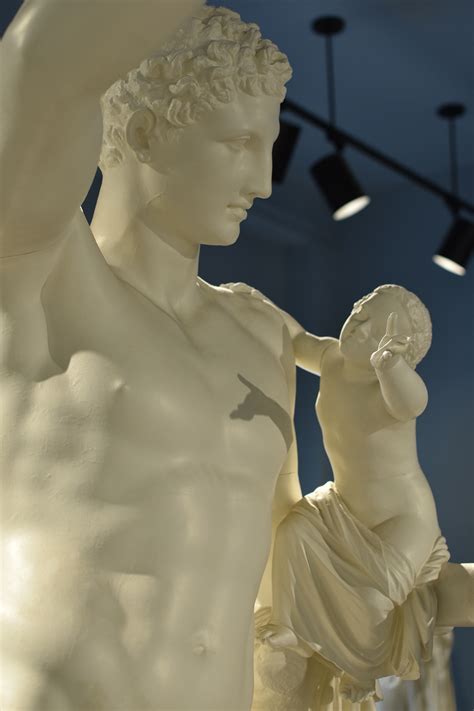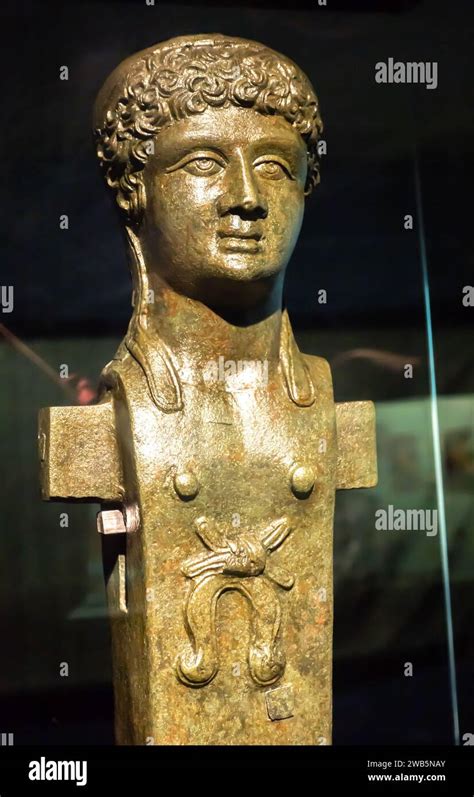hermes statue head | the god hermes by praxiteles hermes statue head In ancient Greece the statues were thought to ward off harm or evil, an apotropaic function, and were placed at crossings, country borders and boundaries as protection, in front of temples, near to tombs, outside houses, . See more Wraparound Terrace Suite Fountain View. The Cosmopolitan of Las Vegas. Las Vegas Strip, Central. 0.21 miles (0.34 km) from Bellagio Fountains. 1610 Sq Ft (149 Sq M) | 1 King Bed. Experience panoramic views the Las Vegas skyline and indulge in luxurious living at the 1200 square foot Wraparound Terrace Suite at The Cosmopolitan.
0 · the god hermes by praxiteles
1 · praxiteles hermes with infant dionysus
2 · hermes with infant dionysus
3 · hermes statue found
4 · hermes of praxiteles statue
5 · hermes by praxiteles
6 · hellenistic statue of hermes
7 · famous statues of hermes
Browse the best May 2024 deals on Pickup Truck vehicles for sale in Las Vegas, NV. Save right now on a Pickup Truck on CarGurus.. $999,999. • •. WANTED Buying Studio Audio/Video Equipment. 19 mins ago
A herma (Ancient Greek: ἑρμῆς, plural ἑρμαῖ hermai), commonly herm in English, is a sculpture with a head and perhaps a torso above a plain, usually squared lower section, on which male genitals may also be carved at the appropriate height. Hermae were so called either because the head of Hermes was . See moreIn the earliest times Greek divinities were worshipped in the form of a heap of stones or a shapeless column of stone or wood. In many parts of Greece there were piles of stones by the sides of roads, especially at their . See moreIn ancient Greece the statues were thought to ward off harm or evil, an apotropaic function, and were placed at crossings, country borders and boundaries as protection, in front of temples, near to tombs, outside houses, . See moreIn 415 BC, on a night shortly before the Athenian fleet was about to set sail for Syracuse as part of the Sicilian Expedition of the Peloponnesian War, all of the Athenian hermai were vandalized. Many people at the time thought such an impious act would . See more
In Plato's Hipparchus, Socrates attributes the existence of these statues to Hipparchus. They were meant to educate the people in the country, outside of Athens, and make them admire Hipparchus' wisdom over the wisdom of the Delphic . See more• Boundary marker § Greece• Crossroads (mythology)• Cairn• Inuksuk – Arctic North American . See more
• Ancient Greek Art: Herm Statue, Theoi Project• A Dictionary of Greek and Roman antiquities (1890), Perseus Project• Herm (Greek religion)– Britannica Online Encyclopedia See moreBronze statuette of Hermes. On view at The Met Fifth Avenue in Gallery 164. Hermes—messenger of the gods, the cattle rustler, the inventor of the lyre, the guider of souls .In 1874, the Greek state signed an agreement with Germany for an archaeological exploration of the Olympia site, which was first dug in the French Morea expedition of 1829. The German excavations in 1875 were led by Ernst Curtius. On 8 May 1877, in the temple of Hera, he uncovered the body (head, torso, legs, left arm) of a statue of a young man resting against a tree trunk covered by a mantle. Protected by the thick clay layer above it, it was in an exceptionally g.A herma (Ancient Greek: ἑρμῆς, plural ἑρμαῖ hermai), [1] commonly herm in English, is a sculpture with a head and perhaps a torso above a plain, usually squared lower section, on which male genitals may also be carved at the appropriate height.
Bronze statuette of Hermes. On view at The Met Fifth Avenue in Gallery 164. Hermes—messenger of the gods, the cattle rustler, the inventor of the lyre, the guider of souls across the River Styx, the manly god of boundaries—stands gracefully here .Hermes and the Infant Dionysus, also known as the Hermes of Praxiteles or the Hermes of Olympia is an ancient Greek sculpture of Hermes and the infant Dionysus discovered in 1877 in the ruins of the Temple of Hera, Olympia, in Greece. It is .Fragmentarily preserved statue of Hermes, the head, right arm and legs of which are missing. The god sits on a rock clad in a chlamys that covers the left part of his body. In his right hand he would have held a tortoise.The god has thick eyelids and long beard with symmetrical locks. Small whirling curls frame the forehead and longer ones would have fallen on his chest. This iconographic version continues the tradition of Hermes with archaistic features, a typological representation formed in the last decades of the 5th century BC.
The Hermes Statue depicts the god Hermes in a relaxed pose. The statue showcases Hermes in a casual yet graceful stance, known as the “resting Hermes” pose. This unique representation contrasts traditional upright statues of .
the god hermes by praxiteles

praxiteles hermes with infant dionysus
Title: Bronze statuette of Hermes. Period: Archaic. Date: 6th century BCE. Culture: Greek, Arcadian. Medium: Bronze. Dimensions: H. 3 3/4 in. (9.6 cm) Classification: Bronzes. Credit Line: Bequest of Walter C. Baker, 1971. Accession Number: 1972.118.67Marble statue of Hermes. Roman. 1st or 2nd century CE. On view at The Met Fifth Avenue in Gallery 162. Copy or adaptation of a Greek statue of the late 5th or 4th century B.C. Hermes, the Greek messenger god, is identified by his short cloak and the remains of a herald’s staff that is visible along his left upper arm.

The herma (more commonly written in English as herm; plural as hermae or hermai) was a form of statuary that originated in ancient Greece. In general, these statues were stone columns that corresponded to the stature of the human body, and were topped by the head of Hermes, one of the Olympian gods.
This head of Hermes is an archaizing work: the rows of corkscrew curls above the forehead go back to the Archaic period (600–480 BCE), while the facial features are in the Classical style of the later fifth century BCE. Hermes, the Roman Mercury, was the messenger god.A herma (Ancient Greek: ἑρμῆς, plural ἑρμαῖ hermai), [1] commonly herm in English, is a sculpture with a head and perhaps a torso above a plain, usually squared lower section, on which male genitals may also be carved at the appropriate height.Bronze statuette of Hermes. On view at The Met Fifth Avenue in Gallery 164. Hermes—messenger of the gods, the cattle rustler, the inventor of the lyre, the guider of souls across the River Styx, the manly god of boundaries—stands gracefully here .
Hermes and the Infant Dionysus, also known as the Hermes of Praxiteles or the Hermes of Olympia is an ancient Greek sculpture of Hermes and the infant Dionysus discovered in 1877 in the ruins of the Temple of Hera, Olympia, in Greece. It is .Fragmentarily preserved statue of Hermes, the head, right arm and legs of which are missing. The god sits on a rock clad in a chlamys that covers the left part of his body. In his right hand he would have held a tortoise.The god has thick eyelids and long beard with symmetrical locks. Small whirling curls frame the forehead and longer ones would have fallen on his chest. This iconographic version continues the tradition of Hermes with archaistic features, a typological representation formed in the last decades of the 5th century BC.
The Hermes Statue depicts the god Hermes in a relaxed pose. The statue showcases Hermes in a casual yet graceful stance, known as the “resting Hermes” pose. This unique representation contrasts traditional upright statues of .Title: Bronze statuette of Hermes. Period: Archaic. Date: 6th century BCE. Culture: Greek, Arcadian. Medium: Bronze. Dimensions: H. 3 3/4 in. (9.6 cm) Classification: Bronzes. Credit Line: Bequest of Walter C. Baker, 1971. Accession Number: 1972.118.67Marble statue of Hermes. Roman. 1st or 2nd century CE. On view at The Met Fifth Avenue in Gallery 162. Copy or adaptation of a Greek statue of the late 5th or 4th century B.C. Hermes, the Greek messenger god, is identified by his short cloak and the remains of a herald’s staff that is visible along his left upper arm.
The herma (more commonly written in English as herm; plural as hermae or hermai) was a form of statuary that originated in ancient Greece. In general, these statues were stone columns that corresponded to the stature of the human body, and were topped by the head of Hermes, one of the Olympian gods.

hermes with infant dionysus

hermes eau des erveilles
CR CREAT - Updated May 2024 - 38 Photos & 22 Reviews - 3327 S Las Vegas Blvd, Las Vegas, Nevada - Coffee & Tea - Restaurant Reviews - Phone Number - Yelp.
hermes statue head|the god hermes by praxiteles


























